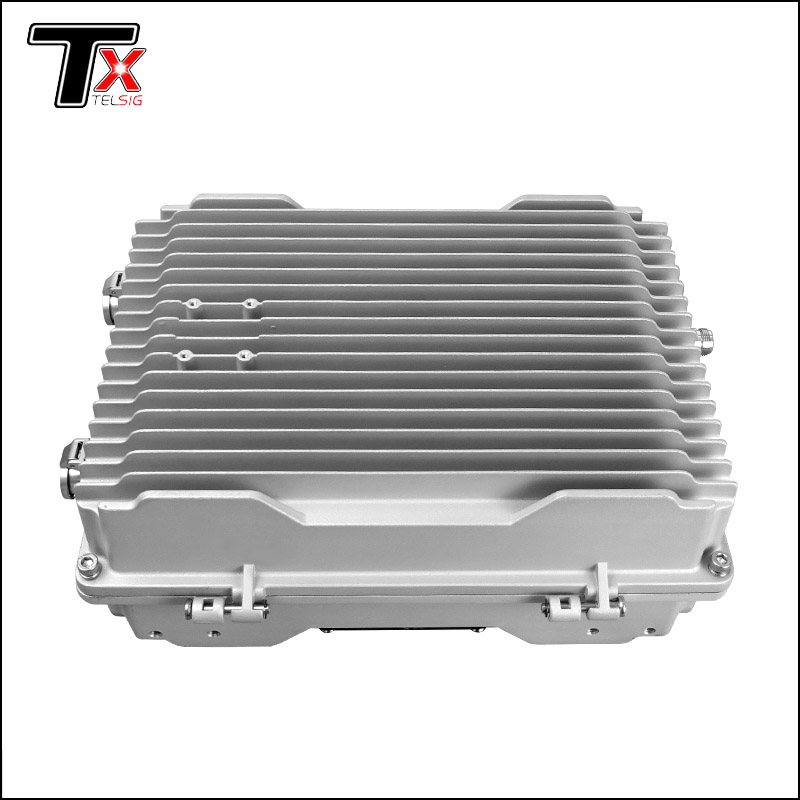The Future of Security: How Anti-Drone Systems are Revolutionizing Protection
2025-03-13
Drones have evolved from a niche hobbyist gadget into a major tool used across industries—from delivery services to surveillance. However, as their presence in the sky increases, so does the potential for misuse. Drones can pose significant security threats, from unauthorized surveillance to the delivery of contraband or even potential weaponized attacks. This growing concern has paved the way for the development of advanced anti-drone systems, designed to protect airspace and keep sensitive areas secure.
As drones become more accessible and technologically advanced, anti-drone technology is becoming a crucial part of modern security strategies. Let’s explore how these systems work and why they are so important in today’s world.
What Is an Anti-Drone System?
An anti-drone system is a specialized technology designed to detect, track, and neutralize unauthorized drones that may pose a threat to a specific area, facility, or event. These systems are typically deployed by governments, military organizations, airports, and other critical infrastructures to protect against malicious drone activities.
The primary goal of an anti-drone system is to disable or take control of a drone without causing damage to the surrounding environment or endangering people. Anti-drone systems typically use a combination of sensors, radar, and jamming technology to detect and intercept drones, rendering them incapable of continuing their flight path.
How Do Anti-Drone Systems Work?
Anti-drone systems vary in design and functionality, but they generally operate using one or more of the following technologies:
1. Radar Detection: Radar is one of the most common tools used to detect drones. Specialized radar systems are capable of identifying the unique signatures of drones in the air. Radar detection systems can track a drone's movement, speed, and altitude, providing real-time information to operators.
2. Radio Frequency (RF) Jamming: Many anti-drone systems rely on RF jamming technology to disrupt the communication between a drone and its operator. Drones often rely on radio signals to stay connected to their controller. By emitting a stronger signal in the same frequency range, the anti-drone system can block the drone’s signals, forcing it to either lose control or return to its home point.
3. Electro-Optical and Infrared Sensors: Some anti-drone systems utilize cameras, infrared sensors, or thermal imaging technology to visually identify and track drones. These systems are particularly useful for targeting drones at longer ranges and during night-time operations.
4. GPS Spoofing: Another effective method is GPS spoofing, which sends false GPS signals to a drone. This misleads the drone into thinking it is in a different location, effectively hijacking its navigation system and redirecting its flight path to a safe location.
5. Drone Capture and Net Systems: In cases where a non-destructive approach is preferred, some anti-drone systems deploy nets to capture and bring down drones safely. These systems are designed to entangle the drone in mid-air, preventing it from continuing its flight without causing damage.
6. Directed Energy Weapons: For extreme situations, some anti-drone systems use directed energy technology, such as lasers or microwave energy, to disable or destroy drones. These systems can either damage the drone’s electronics or disable its motors, bringing it down without physical contact.
Why Are Anti-Drone Systems Crucial?
As drone technology continues to advance, the potential for misuse becomes more significant. Here are some reasons why anti-drone systems are essential in modern security:
1. Protecting Critical Infrastructure: Drones are increasingly being used to surveil sensitive locations, such as military bases, government buildings, power plants, and airports. An unauthorized drone entering these airspaces can be used for espionage, terrorism, or sabotage. Anti-drone systems provide an effective line of defense against these types of threats.
2. Ensuring Public Safety: With the rise of drone use in crowded public spaces, large events, and sporting arenas, there is an increased risk of drones being used to smuggle illegal goods, spy on individuals, or even cause harm. Anti-drone systems can prevent these incidents, ensuring that public events and gatherings remain safe.
3. Preventing Drone Terrorism: Drones can be used as tools of terrorism, carrying explosives or other dangerous payloads. This poses a significant threat to security worldwide. Anti-drone systems are essential for neutralizing these threats before they can escalate, protecting both people and property.
4. Privacy Protection: Drones equipped with cameras are capable of invading personal privacy by capturing footage of individuals, homes, and private properties. Anti-drone technology can help protect individuals from surveillance, ensuring their privacy is respected.
5. Counteracting Smuggling and Crime: Drones are increasingly being used for illegal activities such as smuggling drugs, weapons, or contraband into restricted areas. Anti-drone systems can help law enforcement agencies stop these criminal activities by detecting and neutralizing drones used for illicit purposes.
Real-World Applications of Anti-Drone Systems
1. Military and Defense: Military installations are prime targets for drone threats, whether for surveillance, intelligence gathering, or even weaponized attacks. Anti-drone systems are used to defend borders, airfields, and sensitive defense areas, ensuring that drones cannot breach security protocols.
2. Airports and Aviation: Airports are highly vulnerable to drone interference, which can cause flight delays, cancellations, and safety hazards. Anti-drone systems help protect airspace around airports, preventing drones from interfering with incoming or outgoing flights.
3. Public Events and Large Gatherings: Sporting events, concerts, and festivals are often held in open-air venues, making them susceptible to drone surveillance or attacks. Anti-drone systems are deployed to ensure that drones cannot disrupt these events and that attendees remain safe.
4. Critical Infrastructure: Power stations, water plants, and government buildings are vital for national security and public services. Anti-drone systems are used to protect these facilities from drone-based espionage or sabotage.
Challenges and Ethical Considerations
While anti-drone systems are crucial for security, there are also challenges and ethical concerns surrounding their use. The use of RF jamming or GPS spoofing, for example, may inadvertently interfere with legitimate drone operations, such as those used by hobbyists, delivery services, or emergency responders. Moreover, directed energy weapons, while effective, raise concerns about potential collateral damage to people or property.
As drone technology continues to evolve, anti-drone systems must also advance to keep up with emerging threats. Developing systems that are both effective and ethical is essential for maintaining the balance between security and freedom.
Conclusion
The increasing use of drones in various sectors has brought new opportunities and challenges. Anti-drone systems are becoming an indispensable tool for securing airspace and protecting people, property, and infrastructure from drone-related threats. Whether used in military, public safety, or commercial contexts, these systems are at the forefront of modern security, ensuring that drones are only used for their intended purposes and not for malicious acts.
As the technology continues to develop, we can expect even more sophisticated anti-drone solutions to emerge, making it easier to safeguard the skies and prevent any unwanted aerial intrusions. The future of security is not only on the ground but in the air, and anti-drone systems are leading the charge in this new frontier.



